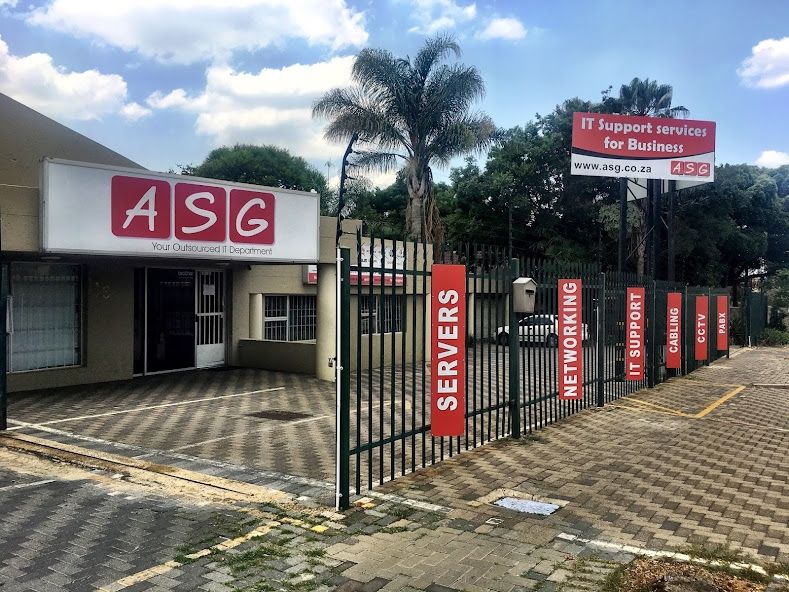Best practice for merging IT systems in mergers and acquisitions
Postado por ASG's blog - ASG IT Support Services em 17/03/2025 em TECH NEWSWith the rapid pace of digital transformation and the increasing complexity of corporate environments, aligning technological infrastructures without compromising security and operational efficiency has become a critical factor for successful transactions.

ASG IT Support Services. Portal ERP South Africa.
Mergers and acquisitions (M&A) present both immense opportunities and significant challenges for businesses, particularly in IT integration. Ensuring a seamless transition requires meticulous planning, robust strategies, and an understanding of the technological landscape.
In South Africa, where digital transformation is accelerating, companies engaged in M&A should work with a trusted IT company to streamline system integration, minimize operational disruptions, and prevent financial losses. This article, originally published on ASG's blog, explores the challenges, critical considerations, and best practices for merging IT systems in mergers and acquisitions during M&A transactions.
Challenges of IT Integration in Mergers and Acquisitions
IT integration in M&A is fraught with challenges that, if unaddressed, can lead to costly delays and inefficiencies. One of the primary obstacles is system incompatibility. Many companies use legacy systems that are not designed to integrate seamlessly with modern cloud-based platforms. According to a study by McKinsey & Company, up to 50% of M&A failures result from poor integration, with IT system misalignment being a major contributor.
Another significant challenge is data consolidation. Merging companies often store vast amounts of data in different formats and locations, making it difficult to standardise and ensure data integrity. Security risks also escalate during IT integration, as cybercriminals often target businesses during transitional phases. Research from IBM’s Cost of a Data Breach Report indicates that security vulnerabilities during M&A increase the likelihood of breaches by 20%.
Cultural resistance further complicates IT integration. Employees accustomed to familiar workflows may struggle with new systems, leading to decreased productivity and morale. Without proper change management, businesses risk losing valuable talent and institutional knowledge.
Critical considerations for a smooth integration process
A successful IT integration strategy begins with a thorough due diligence process. Before finalising the merger, IT teams must conduct comprehensive audits of existing infrastructures, assessing hardware, software, cybersecurity protocols, and compliance frameworks. Partnering with an IT consulting firm can help identify potential roadblocks and determine the feasibility of integration.
Scalability is another vital consideration. The merged entity’s IT infrastructure must be capable of supporting future growth without requiring frequent overhauls. Cloud-based solutions often provide the flexibility needed to accommodate evolving business needs.
Regulatory compliance should also be a top priority. In South Africa, the Protection of Personal Information Act (POPIA) mandates strict data handling practices. Companies undergoing M&A must ensure their data protection policies align with legal requirements to avoid hefty fines and reputational damage.
Best practices for IT system integration
Strategic Data Consolidation Data consolidation is the foundation of effective IT integration. Businesses must identify and categorise critical data, eliminating redundancies and standardising formats. Leveraging data integration tools like Informatica or Talend can streamline this process by automating data mapping and transformation. Additionally, establishing a centralised data governance framework ensures consistency and compliance.
Conducting System Compatibility Checks Before merging IT systems, businesses must assess software and hardware compatibility. If systems are incompatible, companies should explore middleware solutions that facilitate communication between disparate platforms. In cases where legacy systems hinder integration, transitioning to cloud-based ERP solutions like SAP S/4HANA or Oracle NetSuite can enhance interoperability and scalability.
Implementing Robust Cybersecurity Measures Cybersecurity should be a top priority during IT integration. Organisations must conduct penetration testing, enforce multi-factor authentication (MFA), and update security patches to mitigate risks. Research from PwC indicates that companies implementing proactive cybersecurity measures during M&A experience 30% fewer security incidents. Encrypting data transfers and securing access controls further bolster defenses against potential threats.
Prioritising Staff Training and Change Management Employee buy-in is critical to the success of IT integration. Companies should invest in comprehensive training programs to familiarise staff with new systems and workflows. Change management strategies, such as appointing IT ambassadors within teams, can facilitate smoother transitions. According to a study by Prosci, organisations that implement structured change management are six times more likely to achieve successful adoption.
Establishing a Clear IT Governance Framework IT governance ensures alignment between business objectives and technology integration. Defining clear roles and responsibilities within the IT team streamlines decision-making and accountability. Regular progress reviews and feedback mechanisms help address challenges proactively, reducing integration delays.
Leveraging Automation for Efficiency Automation accelerates IT integration by minimising manual intervention and human error. Robotic process automation (RPA) tools like UiPath and Blue Prism can automate repetitive tasks such as data migration and system testing. A report from Deloitte highlights that businesses using automation during IT integration experience a 40% reduction in operational disruptions.
Monitoring and Continuous Improvement Post-integration monitoring is crucial for identifying performance issues and optimising processes. Companies should deploy real-time analytics and performance tracking tools to measure system efficiency. Regular audits and feedback loops enable continuous refinement, ensuring long-term success.
A last word
Seamless IT integration is a critical component of successful mergers and acquisitions. By addressing challenges such as system incompatibility, data consolidation, and cybersecurity risks, businesses can create a structured approach to IT integration. Best practices, including strategic data consolidation, staff training, cybersecurity enhancements, and automation, significantly improve the chances of a smooth transition. In South Africa’s evolving digital landscape, organizations that prioritize IT integration as part of their M&A strategy will gain a competitive edge, ensuring operational continuity and financial success.




